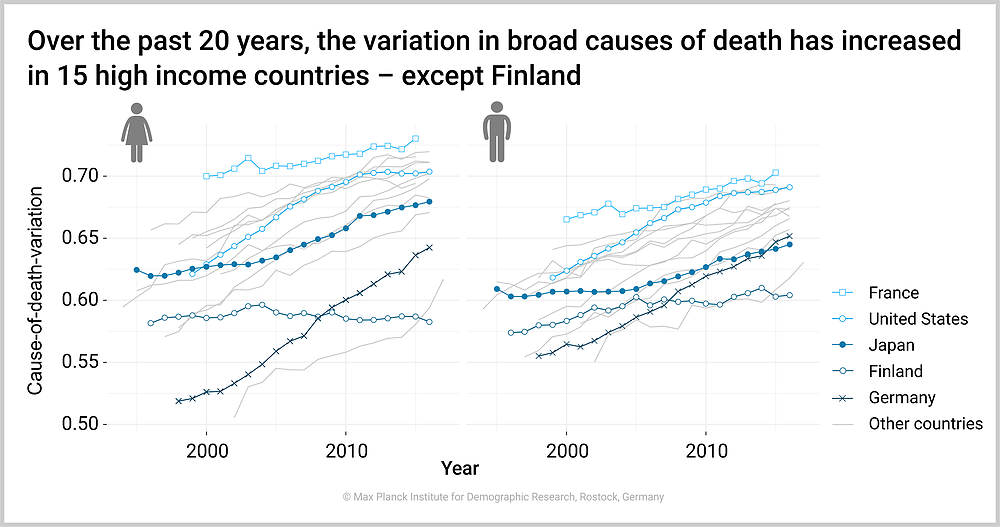July 22, 2020 | Press Release
Mortality in High Income Countries: Causes of Death Show More Variation

In high income countries such as Germany, France, Japan or the USA, the diversity in causes of death increased. © iStockphoto.com/KatarzynaBialasiewicz
Over the past 20 years or so, the variation in broad causes of death has increased in 15 high income countries. More people died of diseases of the nervous system, such as Alzheimer's disease, or diseases of the genitourinary system, such as kidney disease, than did so in the past. However, cardiovascular diseases and cancer remain the two most frequent causes of death.
In high income countries the majority of people die of just two broad groups of causes: cardiovascular disease and cancer. As cardiovascular diseases declined, more people died from cancer. The share of deaths from most other broad causes of death increased, too. This has led to greater diversity in causes of death.
“In high income countries such as Germany, France, Japan or the USA, the diversity in causes of death increased,” says Alyson van Raalte. The head of a research group at the Max Planck Institute for Demographic Research in Rostock adds: “Becoming old gives people more time to pick up a wide range of diseases along the way, any one of which could manifest itself into a deadly episode. That's probably why the variation in causes of death is growing.” For younger age groups, on the other hand, there is no discernible upward trend in recent years.

The researchers used the so-called normalized Shannon entropy, which is a measure of how different one population’s cause of death distribution is from another. If everyone died of the same cause, entropy would be 0. If there was an equal chance of dying from all 19 major cause of death categories, entropy would be 1. © MPIDR
There are large differences in the degree of diversification across countries. “France had the most diversity in causes of death; Germany, Austria and Finland the least,” says Alyson van Raalte. Overall, she says, it is apparent that women die of more diverse causes than men.
For their study published in the journal BMJ Global Health, the international team of researchers used data from the Human Mortality Database and the World Health Organization Mortality Database for the period between 1994 and 2017. Causes of death were grouped into 19 broad categories, known as the ICD-10 chapters. The categories each refer to a body system, for instance the circulatory system, respiratory system or cancers. With this system, physicians determine the cause of death and note it on the death certificate.
“Certainly, it also plays a role that the doctors' diagnoses have become more accurate” says Alyson van Raalte. But this factor alone does not explain the trend in recent years. The redistribution of causes of death makes it increasingly difficult to predict which cause of death people will die from in the future. Research and health care spending to reduce the most common causes of death will have a smaller and smaller effect on improving life expectancy as a whole. In the long term, this could potentially slow down improvements in life expectancy.
Original publication
Bergeron-Boucher, M-P., Aburto, J.M., van Raalte, A.: Diversification in causes of death in low-mortality countries: Emerging patterns and implications. BMJ Global Health. 2020 DOI: 10.1136/bmjgh-2020-002414